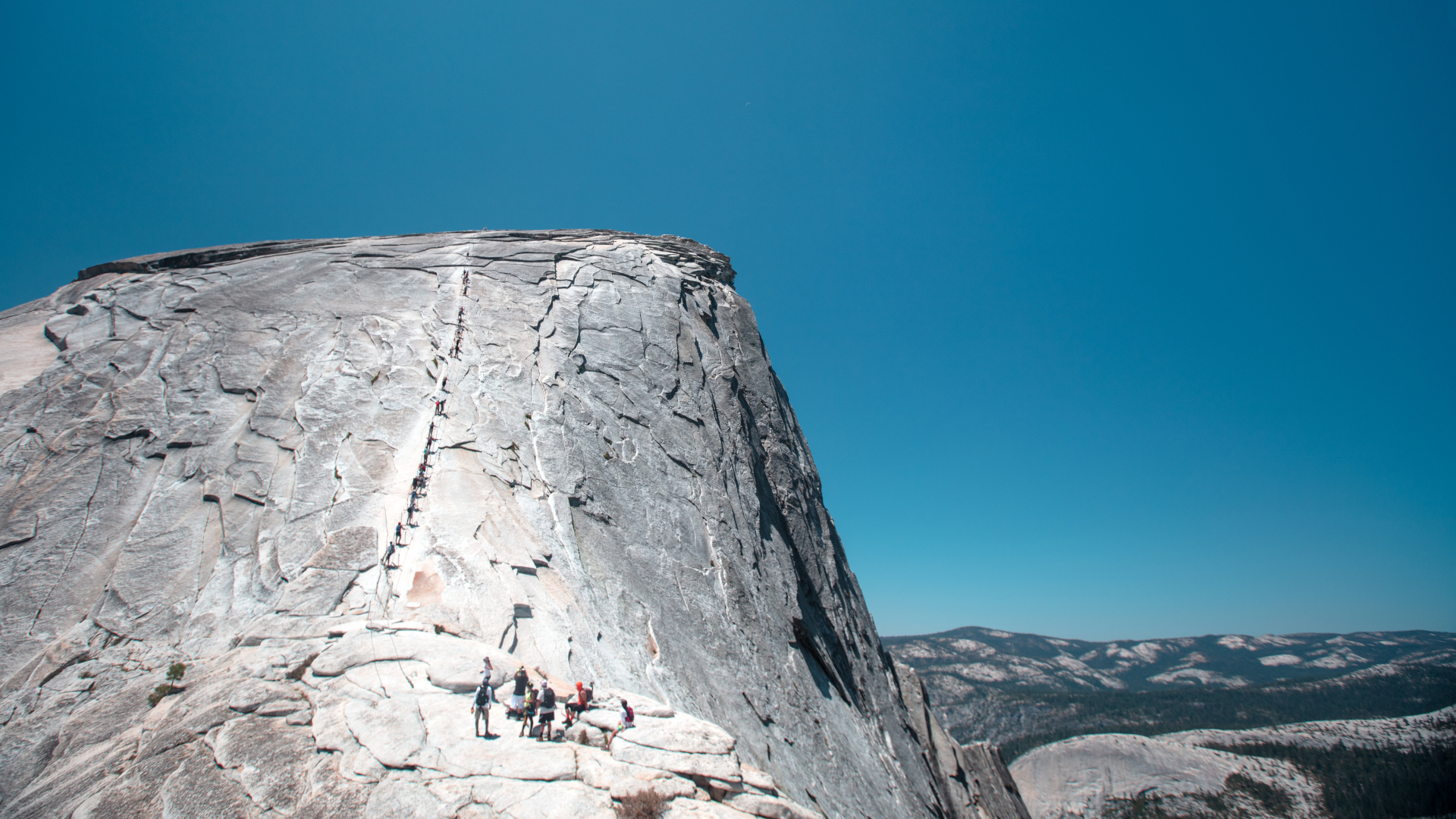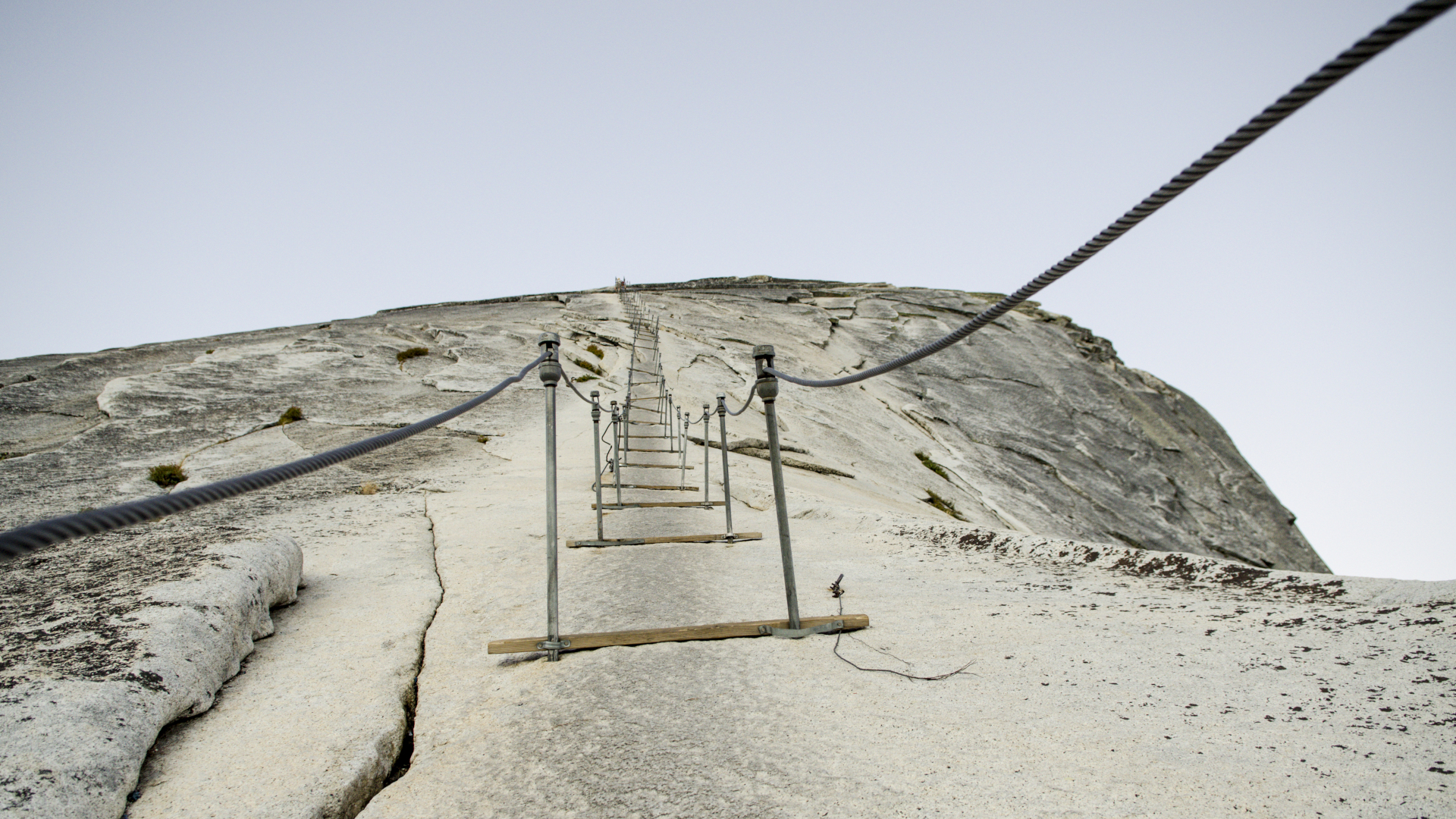"There is nothing you can do to guarantee your safety" – college student's tragic death highlights the dangers of hiking Half Dome
Though thousands of people complete this iconic hike each year, the National Park Service warns hikers that it is innately risky

A college student fell to her death in Yosemite National Park on July 13, underscoring the inherent risk associated with hiking one of America's most iconic rock formations.
Grace Rohloff, 20, an experienced hiker, was with her father Jonathan when the accident occurred. Rohloff tells San Francisco Gate that the pair had secured their permit to hike Half Dome only two days earlier and were excited to undertake the famous trail, which entails a 14-mile roundtrip hike using cables that are bolted into the rock to reach its 8,842ft summit.
Half Dome is notoriously treacherous when it rains due to its smooth granite surface, and Rohloff says rangers had warned the pair about incoming thunderstorms on the morning of their hike. However, skies were clear when they began their hike and the pair made it to the summit with no issues. The weather quickly changed, however, and the two hikers began what they hoped would be a hasty descent.
“A black cloud was rolling in like gangbusters,” recalls Rohloff.
“I was like, ‘We have got to get down now, because we don’t want to be up here with any rain. It rolled in literally out of nowhere.’”

According to Rohloff, the pair's descent was hampered by slower hikers ahead of them – the cable section is a single file hike and they felt uncomfortable asking if they could pass – and the rock soon turned slick. His daughter reportedly told Rohloff that the new hiking shoes she was wearing were slipping on the rock before falling 200 feet to her death.
“She just slid off to the side, right by me, down the mountain,” says Rohloff. “It happened so fast. I tried to reach my hand up, but she was already gone.”
All the latest inspiration, tips and guides to help you plan your next Advnture!
Rohloff says he was unable to safely descend to his daughter and immediately called 911 for help.
Mountain rescue crews took another three hours to reach Grace in a mission that took place in rain and hail, before escorting Rohloff down the mountain.
The National Park Service has not commented on this story or issued a statement, however their guide to hiking Half Dome does note that it is innately dangerous, writing: "There is nothing you can do to guarantee your safety."
In addition to becoming slick in wet conditions, it is a long, steep hike and even with a permit system to control crowds, the cable section can be congested in the summer months. The Yosemite trail guide Yosemite Hikes reports that 20 people have died on Half Dome with the previous incident occurring in 2019.
The NPS does issue the following advice for Half Dome hikers to reduce their risk:
- Be in good shape for hiking Half Dome.
- Plan and pack to be hiking for a full day and bring a headlamp in case you are out after dark.
- Wear broken-in hiking boots with good ankle support.
- Bring gloves to protect your hands during the cables section.
- Take your time and be patient with slower hikers on the cables section. Allow faster hikers to pass you (when possible) and remain on the inside of the cables.
- Check the weather forecast and do not attempt an ascent if storm clouds are in the area or the rock is wet.
- Load up your water bottles or hydration bladder with a gallon of water (four liters).
As an update to this story, some readers have mentioned to us that they have had success on Half Dome by wearing a harness and clipping in during the cables section (like a via ferrata). There is no mention of this technique on Yosemite's website, but we have sent a request to the NPS to ensure there is no reason not to do this before we recommend it.
Julia Clarke is a staff writer for Advnture.com and the author of the book Restorative Yoga for Beginners. She loves to explore mountains on foot, bike, skis and belay and then recover on the the yoga mat. Julia graduated with a degree in journalism in 2004 and spent eight years working as a radio presenter in Kansas City, Vermont, Boston and New York City before discovering the joys of the Rocky Mountains. She then detoured west to Colorado and enjoyed 11 years teaching yoga in Vail before returning to her hometown of Glasgow, Scotland in 2020 to focus on family and writing.

